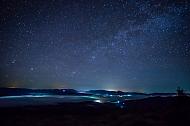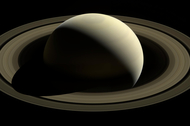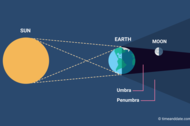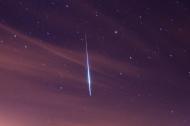Astronomical Events 2024
Check out the dates and times for astronomical events like equinoxes, solstices, meteor showers, eclipses, supermoons, and more.
Jan 3: Earth’s Perihelion
 3Jan
3JanAt 00:38 UTC, the Earth will reach perihelion—the point on its orbit closest to the Sun.
Jan 3/4: Quadrantids Meteors
 3Jan
3JanThe first major meteor shower of 2024, the Quadrantids, peaks on the night of January 3 and the early morning hours of January 4.
Jan 11: New Moon
 11Jan
11JanA New Moon in the sky means no moonlight to hinder your view of stars and planets. Use our Interactive Night Sky Map to find out what planets are visible tonight and where.
Jan 12: Mercury at Greatest Elongation West
 12 Jan
12 JanThis might be a good time to try and spot Mercury: the planet appears at its farthest distance from the Sun in the morning sky.
Jan 25: Wolf Moon
 25Jan
25JanThe first Full Moon of the year is colloquially known as the Wolf Moon in many northern cultures.
Feb 9: Super New Moon
 9 FEB
9 FEBTake advantage of the New Moon to check out the skies with our Interactive Night Sky Map, weather permitting, of course. This month’s New Moon is a Supermoon.
Feb 24: Snow Micromoon
 24 FEB
24 FEBFebruary’s Full Moon is also known as the Snow Moon in many Northern Hemisphere cultures. In 2024, this is a Micromoon.
Mar 10: Super New Moon
 10 Mar
10 MarDark nights a few days before and after the Moon reaches its New Moon phase at 09:00 UTC on March 10 are the best nights to do some night sky watching—see our map! Once again, this is a Super New Moon.
Mar 20: March Equinox
 20 Mar
20 MarThe March equinox is the first day of spring in the Northern Hemisphere and the start of fall in the Southern Hemisphere, by astronomical definitions.
Mar 22: Comet 12P/Pons-Brooks
 22 Mar
22 MarComet 12P/Pons-Brooks is 30 days from reaching perihelion, its closest approach to the Sun. The comet might become visible with the naked eye—it might even be visible during the total solar eclipse on April 8.
Mar 24: Mercury at Greatest Elongation East
 24 Mar
24 MarThis might be a good time to try and spot Mercury: the planet appears at its farthest distance from the Sun in the evening sky.
Mar 24/25: Penumbral Lunar Eclipse
 25 Mar
25 MarThe first eclipse of 2024 is a penumbral lunar eclipse of the Worm Moon visible across North and South America.
Mar 25: Worm Micromoon
 25 Mar
25 MarThe Full Moon in March is traditionally called the Worm Moon, after earthworms that tend to appear around this time in many locations in the Northern Hemisphere. For the second month in a row, this is a Micromoon.
Apr 1: Global Astronomy Month
 1 Apr
1 AprWe’re proud to support Global Astronomy Month. Led by Astronomers Without Borders, a non-profit organization, the month-long event encourages people to share the sky.
Apr 8: Total Solar Eclipse
 8 Apr
8 AprA total solar eclipse takes place across Mexico, the USA, and Canada. Roughly 45 million people live along the path of totality for this eclipse.
Apr 8: Super New Moon
 8 Apr
8 AprThis is the third Super New Moon in a row, and the final one for 2024. (There will be Super Full Moons in September and October.)
Apr 21/22: Lyrid Meteor Shower
 21 Apr
21 AprThe Lyrid meteor shower is expected to peak around April 21 and 22, depending on your location.
Apr 23: Pink Moon
 23Apr
23AprApril’s Full Moon is traditionally known as the Pink Full Moon.
May 4/5: Earthshine Mornings
 4 May
4 MayThe Waxing and Waning Crescent Moon phases in April and May are the best time to see Earthshine, where the unlit part of the Moon becomes visible. It is also known as Da Vinci glow.
May 5/6: Eta Aquarid Meteors
 5May
5MayUse our handy Interactive Meteor Shower Sky Map to increase your chances of seeing shooting stars from the Eta Aquarids.
May 8: New Moon
 8 May
8 MayThis month’s New Moon is at 03:21 UTC on May 8.
May 9: Mercury at Greatest Elongation West
 9 May
9 MayThis might be a good time to try and spot Mercury: the planet appears at its farthest distance from the Sun in the morning sky.
May 11/12: Earthshine Nights
 11 May
11 MayThe Waxing and Waning Crescent Moon phases in April and May are the best time to see Earthshine, where the unlit part of the Moon becomes visible. It is also known as Da Vinci glow.
May 23: Flower Moon
 23 May
23 MayMay’s Full Moon is known as the Flower Moon after all the flowers that bloom around this time in the Northern Hemisphere.
Jun 6: New Moon
 6Jun
6JunMake the most of a moonlight-free night to look for some stars and planets in the skies.
Jun 20: June Solstice
 20Jun
20JunThis solstice is the summer solstice in the Northern Hemisphere, where it is the longest day of the year.
In the Southern Hemisphere, it’s the winter solstice and the shortest day of the year.
Jun 22: Strawberry Moon
 22Jun
22JunJune’s Full Moon is often called the Strawberry Full Moon, after the berries that grow in the Northern Hemisphere around this time of the year.
Jul 5: Earth’s Aphelion
 5Jul
5JulAt 05:06 UTC, the Earth will reach aphelion—the point in its orbit farthest from the Sun.
Jul 5: New Moon
 5 Jul
5 JulJuly’s New Moon comes at 22:57 UTC on July 5. The period around New Moon can be a good time to look at the night sky—without a bright Moon around to lighten the sky.
Jul 21: Buck Moon
 21 Jul
21 JulJuly’s Full Moon is known as the Buck Moon, signifying the new antlers that emerge on deer buck’s foreheads around this time. This year, it falls at 10:17 UTC on July 21.
Jul 22: Mercury at Greatest Elongation East
 22 Jul
22 JulThis might be a good time to try and spot Mercury: the planet appears at its farthest distance from the Sun in the evening sky.
Aug 4: New Moon
 4 Aug
4 AugNew Moon is at 11:13 UTC on August 4, marking the start of another lunar month.
New Moon is a good time to explore the night sky. Find planets, stars, and constellations using our Interactive Night Sky Map!
Aug 12/13: Perseid Meteors
 12 Aug
12 AugThe Perseid meteor shower is usually one of the most active and brightest meteor showers of the year. In 2024, evening viewing will be affected by a bright First Quarter Moon.
Aug 14: Conjunction of Mars and Jupiter
 14 Aug
14 AugMars and Jupiter will pass within 0.31 degrees of each other in the pre-dawn sky. In a presentation at the 2022 Europlanet Science Congress, we highlighted this as one of 7 notable ‘close approaches’ before the year 2040.
Aug 19: Blue Sturgeon Moon
 19 Aug
19 AugAugust’s Full Moon is traditionally called the Sturgeon Moon. This year, it is also a seasonal Blue Moon—the third Full Moon in a season with four Full Moons.
Aug 21: Lunar Occultation of Saturn
 21 Aug
21 AugThe almost Full Moon will pass close to Saturn. In parts of South America, Africa, and Europe, the Moon will pass in front of Saturn—an event known as a lunar occultation.
Aug 28: Comet Tsuchinshan-ATLAS
 28 Aug
28 AugComet A3 (Tsuchinshan-ATLAS)—which was discovered at the beginning of 2023—is 30 days from perihelion, its closest point to the Sun. There is a chance it will become a naked-eye object, although comets are famously unpredictable.
Sep 3: New Moon
 3Sep
3SepA New Moon in the sky means no moonlight to hinder your view of stars and planets. Use our Interactive Night Sky Map to find out what planets are visible tonight and where.
Sep 5: Mercury at Greatest Elongation West
 5 Sep
5 SepThis might be a good time to try and spot Mercury: the planet appears at its farthest distance from the Sun in the morning sky.
Sep 8: Saturn at Opposition
 8 Sep
8 SepThe ringed planet, Saturn, lies on the opposite side of Earth to the Sun, and is visible from sunset to sunrise.
Sep 17/18: Partial Lunar Eclipse
 18 Sep
18 SepThis partial lunar eclipse of the Harvest Moon will be visible from North & South America, Europe, Africa, and parts of Asia.
Sep 18: Super Harvest Moon
 18Sep
18SepIn many Native American cultures, September’s Full Moon is called the Full Corn Moon. This year, it is also the Full Moon closest to the September equinox, making it 2024’s Harvest Moon as well. It is also a Supermoon.
Sep 22: September Equinox
 22 Sep
22 SepAlso known as the autumnal (fall) equinox in the Northern Hemisphere, the September Equinox is considered by many as the first day of fall.
 2 Oct
2 OctOct 2: Annular Solar Eclipse
A ‘ring of fire’ will be visible in the sky across Easter Island and parts of southern Chile and Argentina, if weather permits.
Oct 2: Micro New Moon
 2Oct
2OctThe first of two New Moons in October is a Micromoon—which explains why today’s solar eclipse is annular, not total.
 8 Oct
8 OctOct 8/9: Draconid Meteor Shower
The best time to see the shooting stars of the peaking Draconids is just after nightfall.
Oct 17: Super Hunter’s Moon
 17Oct
17OctThe October Full Moon is traditionally called the Hunter’s Moon. In 2024, this is the second—and final—Super Full Moon of the year.
Oct 20/21: Orionid Meteor Shower
 20 Oct
20 OctThe Orionids are the second meteor shower in October. The shower peaks around October 20-21 but usually remains active between October 2 and November 7.
Nov 1: New Moon
 1 Nov
1 NovThe New Moon phase is the best time to explore the night sky. Find planets, stars, and constellations using our Interactive Night Sky Map!
 15 Nov
15 NovNov 15: Full Moon / Beaver Moon
November’s Full Moon is traditionally called a Beaver Moon, after beavers that build their dams during this time of the year.
Nov 16: Mercury at Greatest Elongation East
 16 Nov
16 NovThis might be a good time to try and spot Mercury: the planet appears at its farthest distance from the Sun in the evening sky.
Nov 17/18: Leonid Meteor Shower
 17 Nov
17 NovThe Leonids shooting stars are visible between November 6 and 30, and peak on the night of November 17 and early morning of November 18, with up to 15 meteors per hour.
Dec 1: New Moon
 1 Dec
1 DecThere are two New Moons in December 2024. The first one falls on the first day of the month, at 06:21 UTC.
Dec 7: Jupiter at Opposition
 7 Dec
7 DecThe largest planet in the solar system, Jupiter, lies opposite the Sun in the sky, and is visible all night.
Dec 14/15: Geminid Meteors
 14 Dec
14 DecNormally one of the best meteor showers of the year, the Geminids peak around the night of December 14 and early morning hours of December 15. This year, alas, a bright Full Moon will reduce the number of meteors that can be spotted.
 15 Dec
15 DecDec 15: Cold Moon
One of the traditional names for the Full Moon in December is the Cold Moon.
Dec 21: December Solstice
 21 Dec
21 DecThe December solstice will take place at 09:20 UTC. Also known as the winter solstice, it is the shortest day of the year in the Northern Hemisphere. In the Southern Hemisphere, it is the longest day of the year and is called the summer solstice.
Dec 22/23: Ursid Meteors
 22 Dec
22 DecCatch the shooting stars of the last major meteor shower of the year, the Ursids, when it peaks in the night between December 22 and 23.
Dec 25: Mercury at Greatest Elongation West
 25 Dec
25 DecFor the 7th and final time this year, Mercury reaches its farthest distance from the Sun in the sky. The only other planet that has greatest elongations (as viewed from Earth) is Venus—but in 2024 it doesn’t have any.
Dec 30: Black New Moon
 30 Dec
30 DecThe second New Moon of the month, making this a Black Moon.
Note: All dates are UTC, unless otherwise stated.